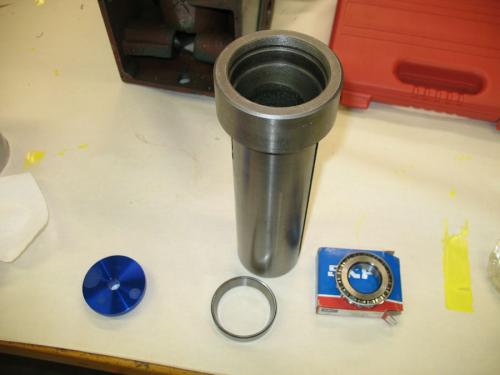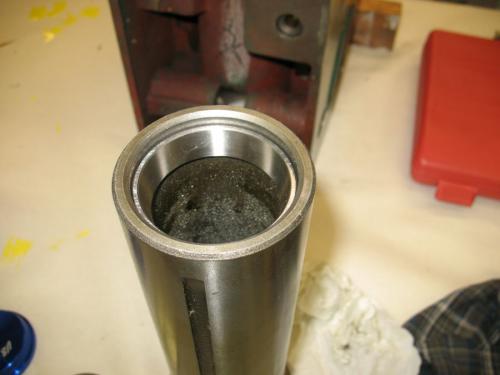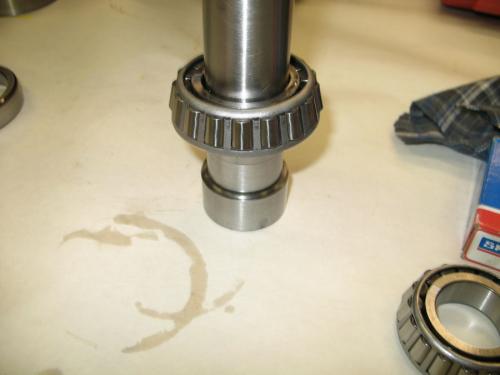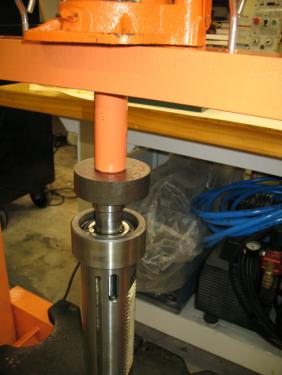Posts: 170
Threads: 9
Joined: Apr 2012
Location: Southern California
05-06-2012, 09:42 PM
(This post was last modified: 05-06-2012, 09:48 PM by henryarnold.)
This photo shows the R8 lower end of the quill before installation of the new bearing outer race. Make sure the bearing location is very clean. Any debris will keep the bearing from properly seating.

I was able to tap the outer races in with a rubber mallet and a bearing driver plate. I installed both upper and lower outer bearing races with a rubber mallet and bearing plate.

Upper installed.

Lower inner race ready to be pressed into place.

To install the lower inner race I slid it on to the quill and then used the shop press to push it into place.

henryarnold, proud to be a member of MetalworkingFun Forum since Apr 2012.
Posts: 3,003
Threads: 51
Joined: Apr 2012
Location: Ontario
Henry, just being the devils advocate but is there any chance the lub oil will dissolve the oil based paint. Glyptal is formulated to resist it.
Following along with interest.
Greg
Free advice is worth exactly what you payed for it.
Greg
Posts: 170
Threads: 9
Joined: Apr 2012
Location: Southern California
(05-07-2012, 01:29 AM)f350ca Wrote: Henry, just being the devils advocate but is there any chance the lub oil will dissolve the oil based paint. Glyptal is formulated to resist it.
Following along with interest.
Greg
Yes there is a chance. It is possible that Glyptal is the only good solution. I Googled this quite a bit and a few things are in my favor. Glyptal is used in engine blocks that get hot. My mill head won't get hot. I found people that successfully used Rustoleum to spray the inside of gearboxes so I know oil based paint can be successful. Last, the Chinese company that built my mill did a half hearted interior paint job which I know wasn't Glyptal and it held up fine. I mentioned Glyptal because that is the proper way to paint a gearbox. I do not suggest following what I did. You are right I may regret trying to save $35.
I'll report back later on how it goes. Hopefully I won't see bits of yellow paint floating past my sight glass. If you want to paint your head interior and be sure it's right, use the Glyptal.
henryarnold, proud to be a member of MetalworkingFun Forum since Apr 2012.




